Social Inclusion
Jon Mietling, designer and artist for Palm Island, works for a non-profit organization, Friendship Circle, which provides programs and services for people with special needs.

The overall idea, according to the designer, was to create a game that could be played anywhere. Jon realized at Friendship Circle that this portability could make a difference for certain players. Also, some people are always on the move, or don't have much space available, or spend a lot of time in one place, like in a hospital.
These factors led Jon Mietling to realize what players want — regardless of whether they have special needs or not. This was the basis for Palm Island.
Let's meet Palm Island, a game that, in addition to being fun, also heralds inclusion!
Palm Island - Game Info
Palm Island is a 1-to-2 players game, age 8+, by designer and artist Jon Mietling.
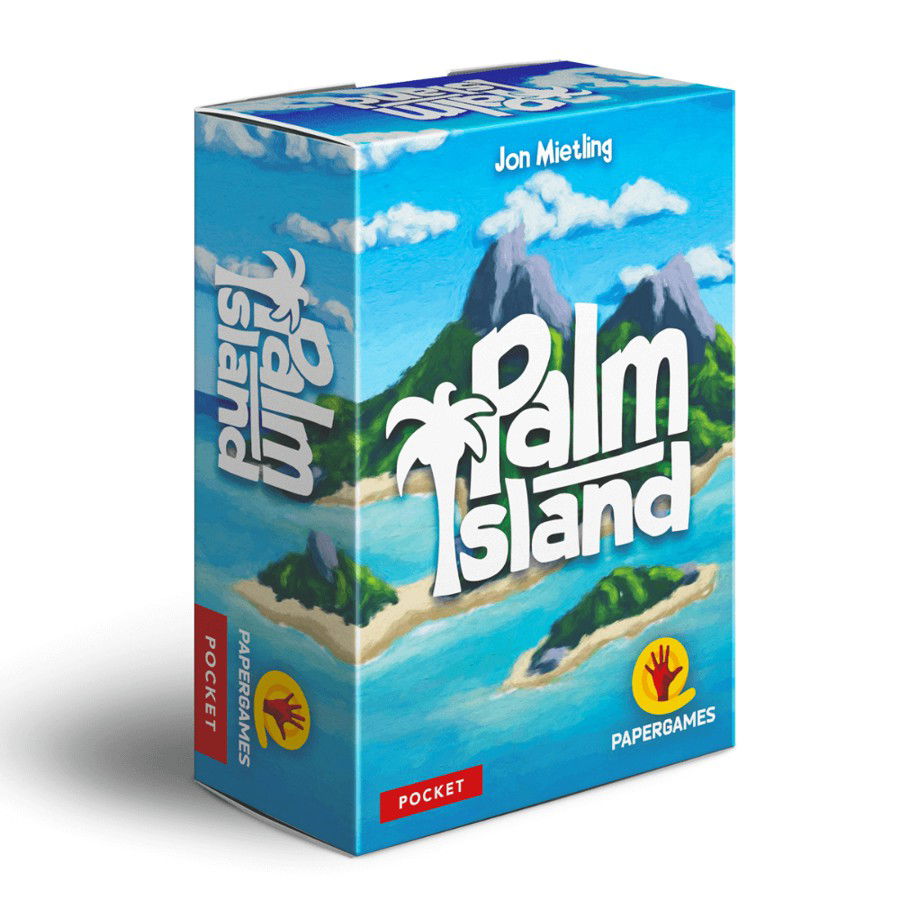
Palm Island was released in 2018 by Portal Dragon, which also belongs to Jon Mietling. In 2022, it arrived in Brazil by Paper Games. The main mechanics of the game are: action selection, hand management, memory, cooperative mode and deck building.
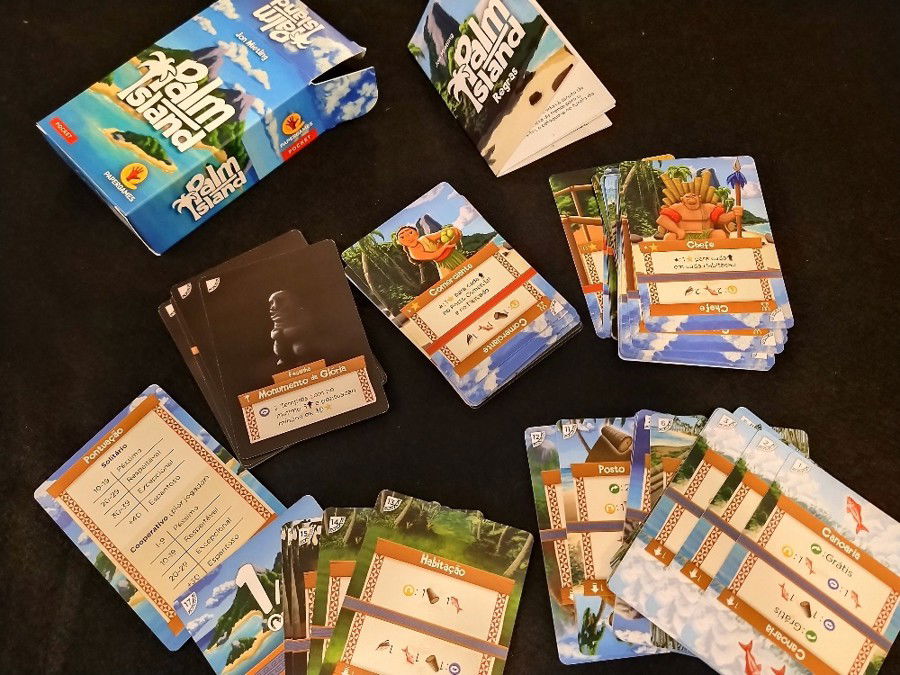
Since its release in 2018, Palm Island was nominated twice for the Golden Geek award, and also a runner-up for Fairplay À la carte.
The Game
The basic idea is to develop your island. To do this, try to store resources: fish, log, and stone.
You'll need to evolve your resource-extraction in order to gather more. This will allow you to expand other buildings that yield more points. You can also fulfill achievements, recruit villagers and, in cooperative mode (with another player), survive natural disasters — but you need to act quickly, as the game only has 8 rounds.
This is the scenario of Palm Island!
The setup for 1 or 2 players is quite simple: each player takes their 17 card-deck, position it correctly (with a white sun icon numbered from 1 to 17 in the upper left corner), shuffle, and, finally, place the round tracker card — starting at 1 — at the bottom of the deck. That's it: the deck is in the palm of your hand, and you're ready to play!
An important note: in Palm Island, both front and back of the cards are used. There is a stripe in the center of the card that divides the upper section from the lower section, on both sides. Thus, each card has 4 possible orientations: 2 on the front and 2 on the back. The upper section facing up is called the Active Area and represents the current orientation of the card.
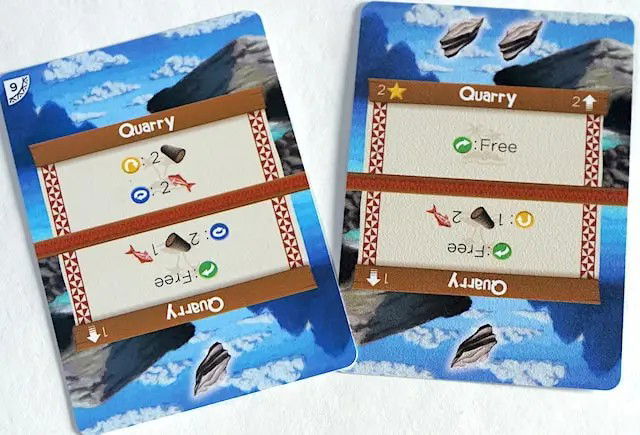
The way to change between these 4 orientations are the card's actions. These are the possible actions:
To take an action, just look at the top 2 cards of the deck and decide which one you'll use.
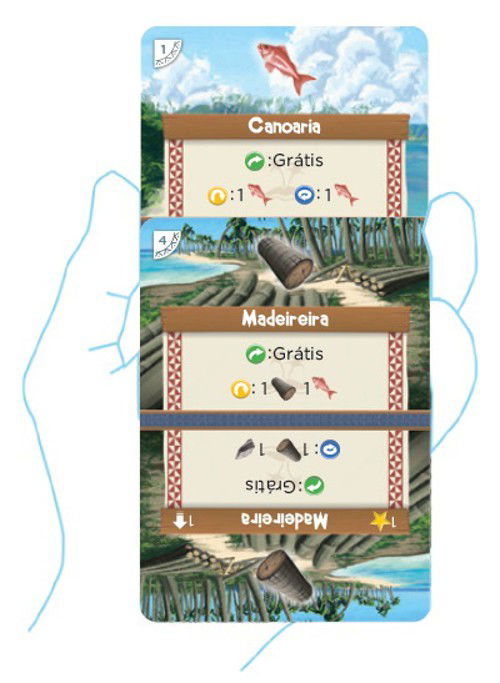
After that, the three possible actions are:
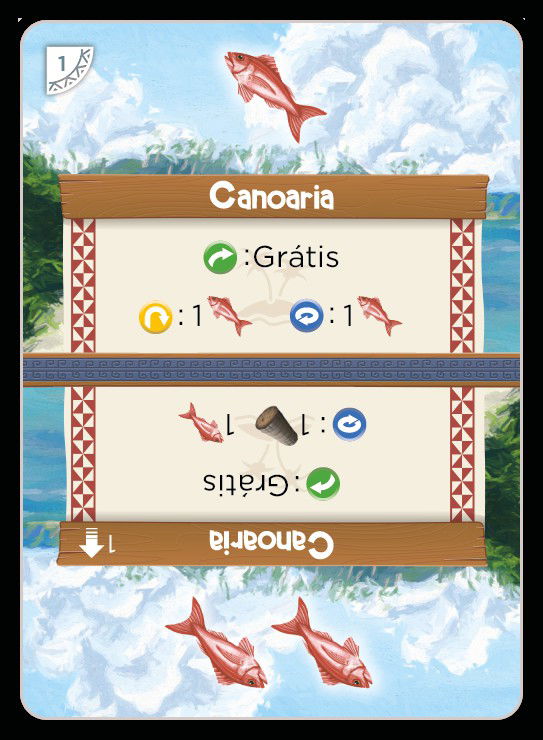
When you Store, the card with resource(s) goes to the bottom of the deck, showing only the stored resource. Important: You can only have up to 4 resource cards stored at the same time.
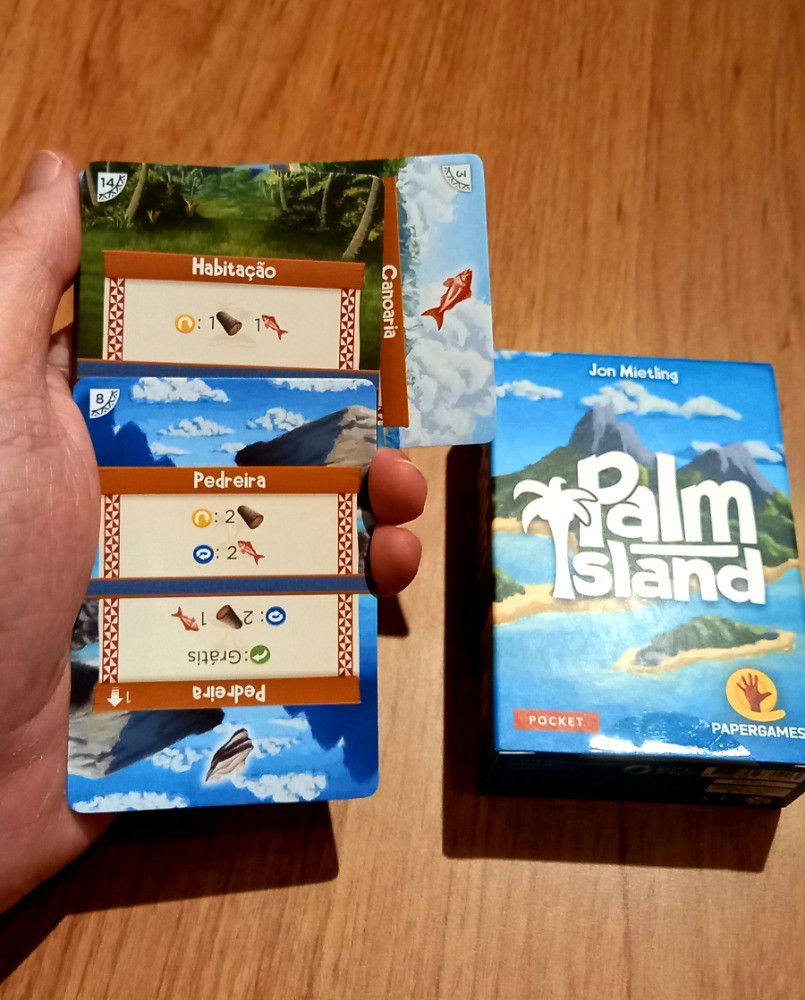
The Rotate and Flip actions give access to an improved version of the card, with more resources, improvements and points. Remember that in both cases, as in the Store action, the cards go to the bottom of the deck after you perform the action.
To pay the costs of any action (Store, Rotate or Flip), use one or more stored resource cards, rotating them 90º counterclockwise — without changing the order of the cards in the deck.
The last action, Discard, can happen for 2 reasons:
Remember: you can only discard the 1st card of the deck, which goes to the bottom of the deck as it is. The 2nd card can never be discarded.
This is a turn in Palm Island! When the top card of the deck is the round tracker card, the round has ended. When this happens, you must turn it over or rotate it to the next round number, place it on the bottom of the deck and start a new round.
Ending the Game
After 8 rounds, the game ends.
To calculate the victory points, just add the values marked with a star on the active area of each card in your deck.
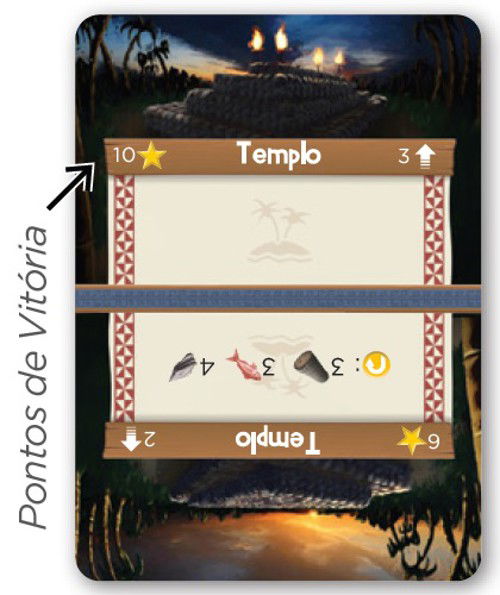
If you're playing Solo, compare your score to the reference chart to see how your village shapes up.
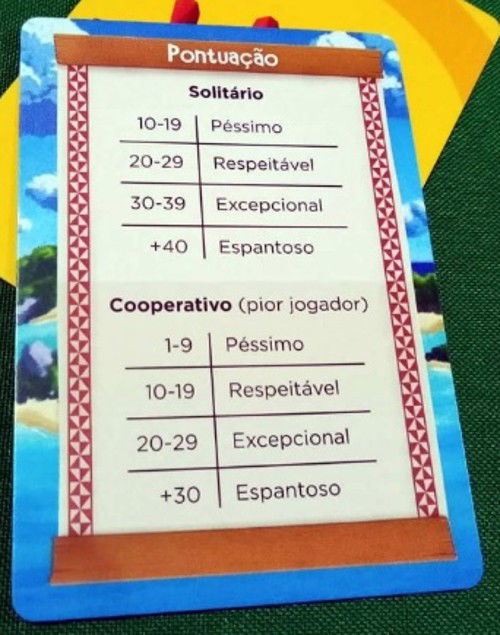
When playing competitive against 1 or more opponents, the person with the highest score is the winner. In case of a tie, each player must add up their upgrades and the player with the most upgrades wins.
If there is still a tie, the player with the most stored resources wins.
And that's it!
Strategy Tips
Palm Island is about resource management - as simple as that. That's exactly what makes it an excellent game: simple, but highly strategic. I'll confess, first time I played, that using only one hand to hold the deck and the resource cards turned sideways was a bit uncomfortable. But after a few minutes I was used to it. That's part of the idea behind the game — and it works very well.
The golden tip in Palm Island is: discard or improve your starting deck as soon as possible. Rotate or Flip, because, in the starting position, their respective Active Areas offer little or no resources.
Another important and strategic tip: at the beginning of the game, you will be happy with any resource that comes up, but keep two things in mind:
I'll explain this a little more. To discard a resource, simply turn the card 90º counterclockwise. But be mindful: do this with the cards that are closest to the beginning of the deck. In other words, discard the oldest resources first. This makes a difference not because the resource will expire, but because it will return to the beginning of the deck without being used — and thus will be lost. So, it's better to trade it for a more useful one. So, don't get attached to resource cards.
About Rotating or Flipping a card, it's natural to think that Flipping is the best choice. Alas, not always: Rotate usually offers more resources, which helps improve other cards. If you Flip too soon, you can hinder other improvements and lose important resources. Be patient, take one step at a time.
One of the coolest parts of Palm Island are the different game modes:
This is Palm Island: big game in a small box!
Use your strategy, manage your resources wisely and win in Palm Island!
Unboxing, Rules and Gameplay Videos
Unboxing:
Rules:
Gameplay:
Pedagogical Tips
If you want a game for everyone, easy to explain and understand, and that will keep kids' attention from start to finish, Palm Island is the game for you. What's more, it also provides several important stimuli.
The game is mostly visual, meaning it requires little reading — just a few Feat cards, and even then, very simple ones. At first (and this happened to me too), kids might get a little confused about how to hold the deck and the resource cards to the side. This ends up a positive, because it helps develop motor skills.
Logical-mathematical reasoning will be present at all times, as you will have to calculate the costs of the cards to store them, rotate them or flip them. It will be a great exercise and also a stimulus for emotional control and anxiety. The children will be eager to quickly meet the requirements to improve a card - and, by consequence, their island.
Management concepts are also present, as well as decision-making - which card to improve, how much resources to spend, etc. Children learn while playing.
You can also introduce some competitiveness gradually, thanks to the various game modes, which progressively increase in difficulty. This is very interesting and something to take advantage of.
Pedagogically, Palm Island stimulates management, strategy, decision-making, logical-mathematical reasoning and, on top of that, it is fun!
I recommend Palm Island for your collection!








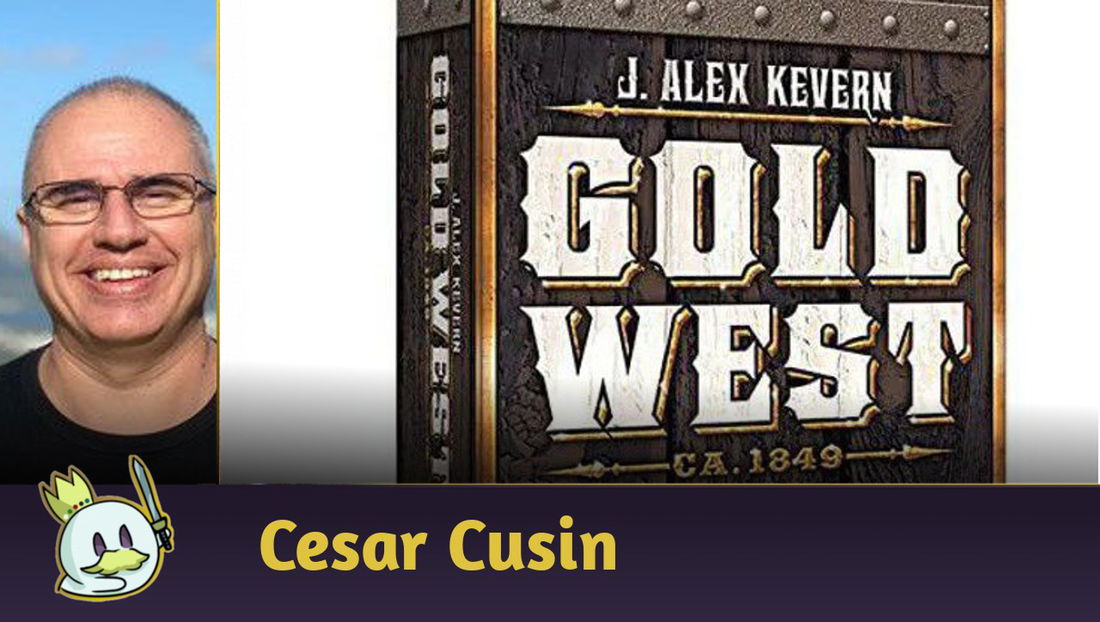
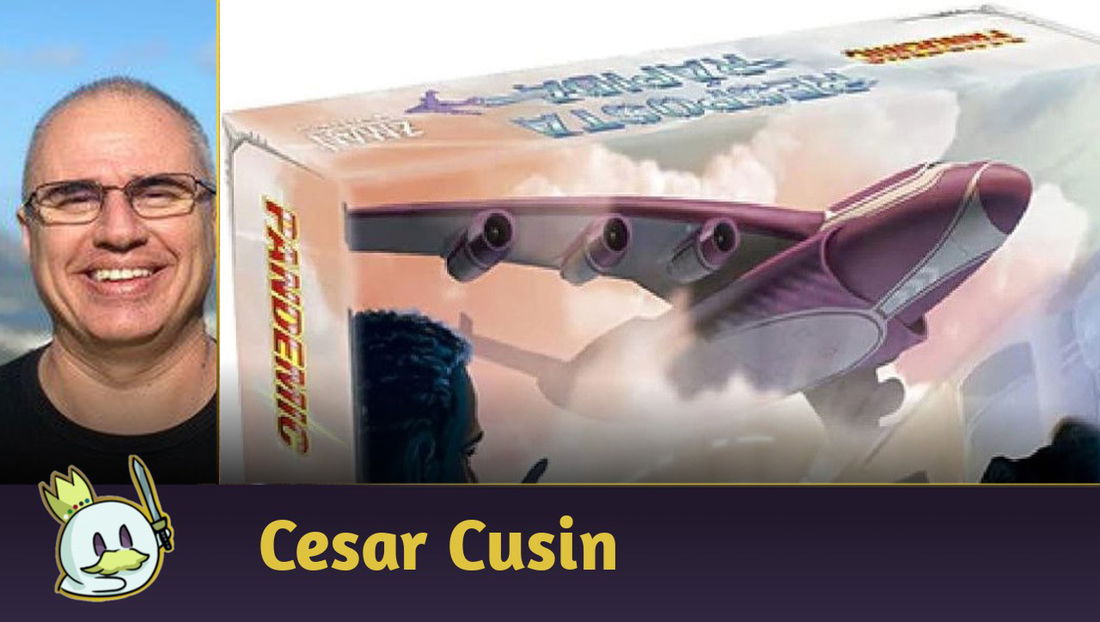


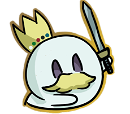
— コメント 0
, 反応 1
最初にコメントする